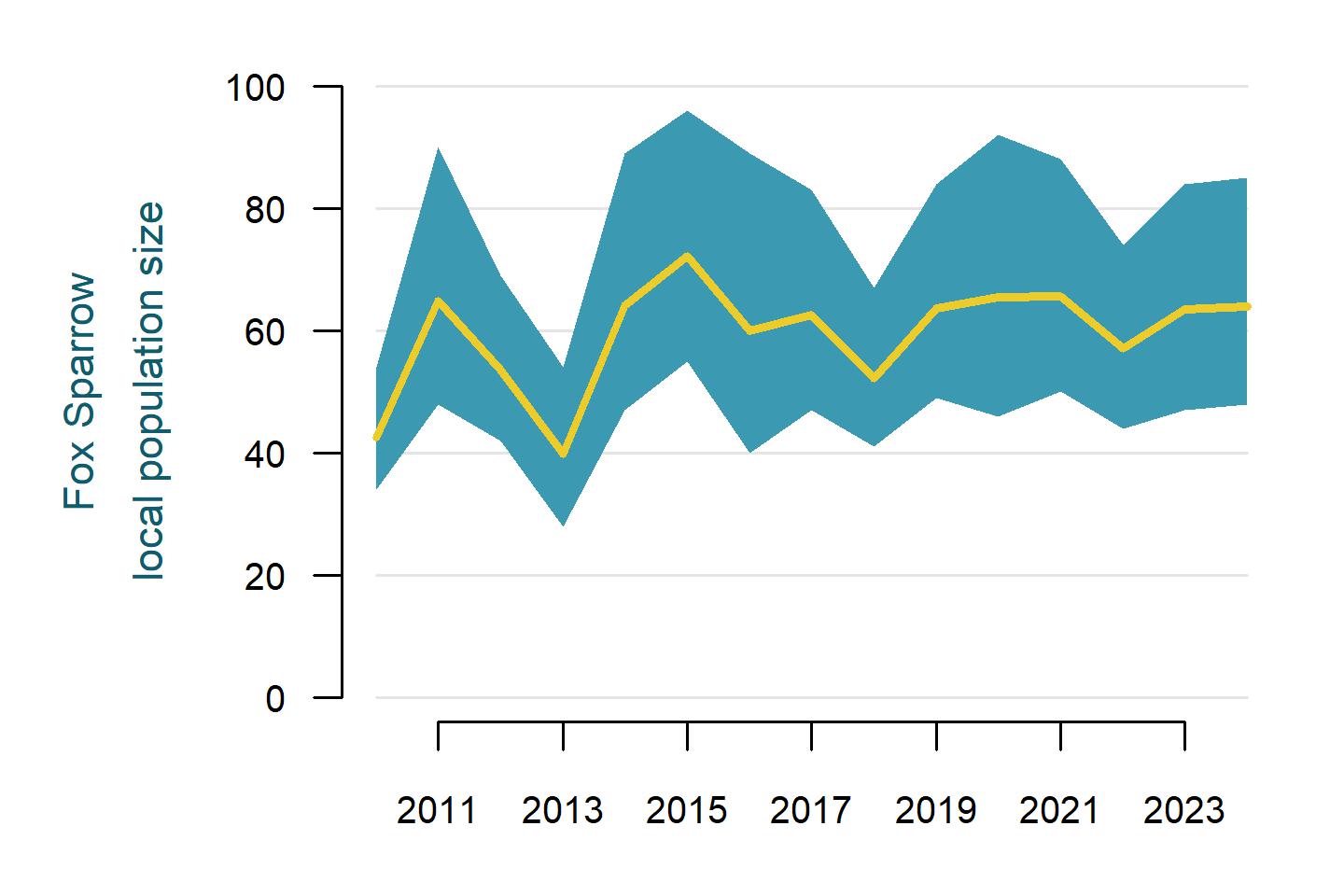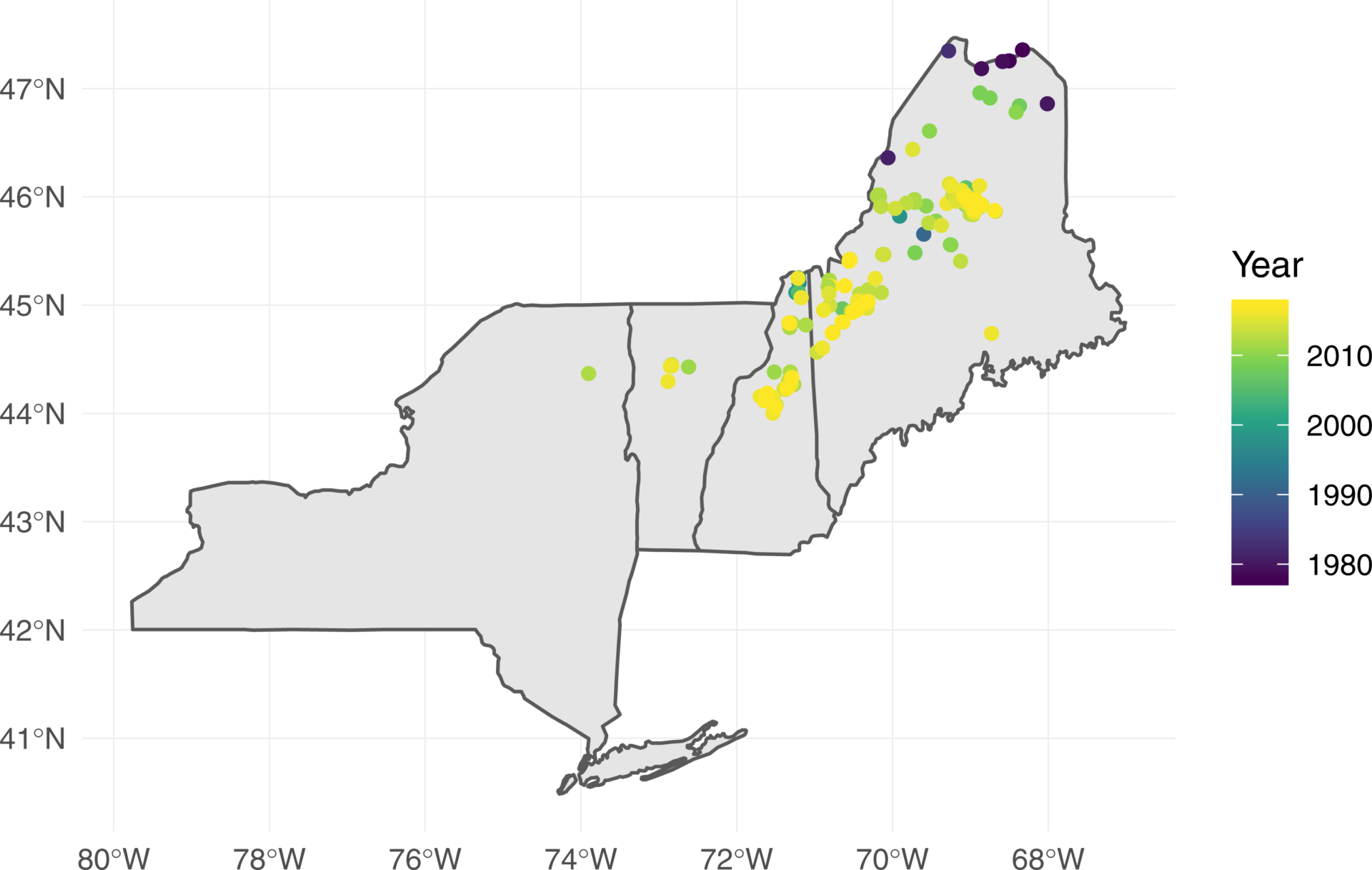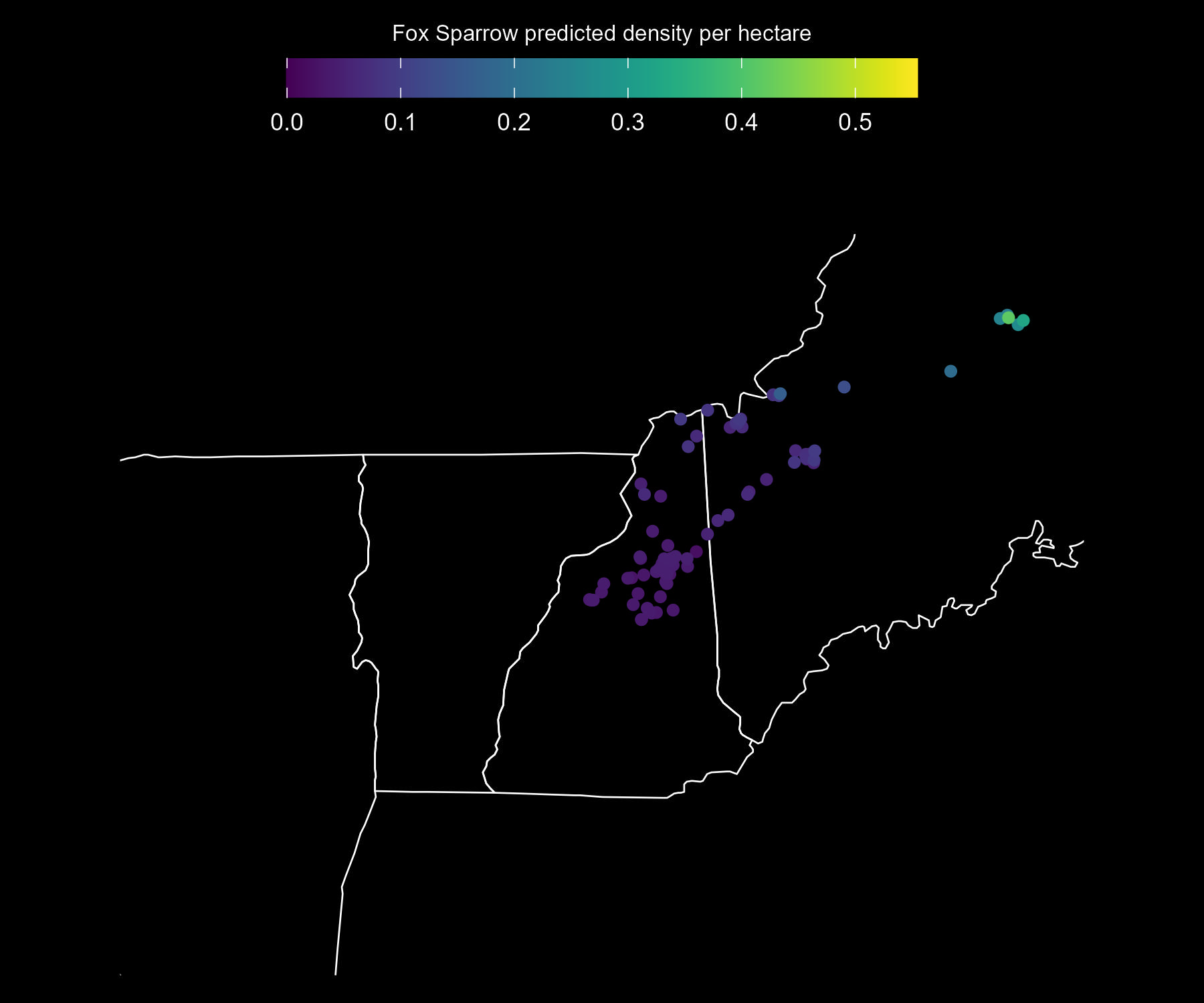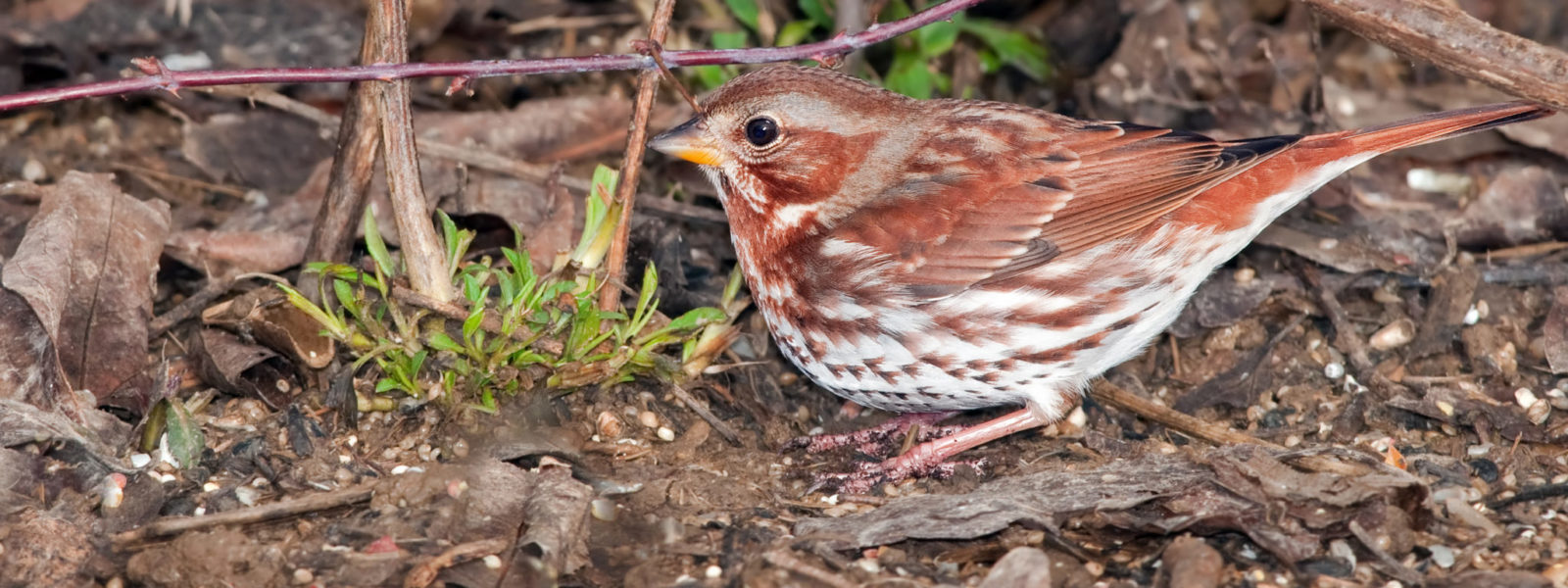The State of Fox Sparrows in the Northeast
Regionally: Numerically stable, but increasing geographically

The mean (thick, yellow line) annual estimate of Fox Sparrow abundance within the immediate area surrounding all 803 Mountain Birdwatch sampling locations, with a 95% Bayesian credible interval (blue polygon, representing estimate uncertainty).
The first Fox Sparrow nest in Maine was detected in 1983. At that time, Fox Sparrows were only known to occur during the breeding season in the far northwest corner of the state. Since then, the species seems to have rapidly expanded further south, and is now apparently a regular breeding species in the mountains of western Maine. John Lloyd (former Director of Science for the Vermont Center for Ecostudies) analyzed eBird data for this species during June and July from the 1980s onward. Lloyd found that Fox Sparrows have moved along the spine of the Appalachian Mountains into New Hampshire and Vermont.

Figure 2 from Lloyd (2018): Fox Sparrow occurrence records in June-July from eBird checklists from 1980 through 2017. Fox Sparrows have been consistently moving southwest through northern New England. https://doi.org/10.7717/peerj.6087
Fox Sparrows are regularly detected during the breeding season as far south as Mount Lafayette in New New Hampshire, but they are only known to breed in northern New Hampshire (first nest was found there in 1996). It’s quite possible that Fox Sparrows are breeding on or near Mt. Washington, but it is not surprising that their nests have not been found there; the Fox Sparrow breeding population around Mt. Washington is likely small and diffuse, and their nests can be exceedingly difficult to locate. Fox Sparrows are not known to breed in New York or Vermont (as of 2024), but this species is occasionally detected during the breeding months on Mount Mansfield and neighboring mountains in VT. Vermont’s first Fox Sparrow nest will likely, eventually be found in this area. [Jason Hill’s best guess is atop Bolton Mountain–send me a photo when you find it. ;)]
Fox Sparrows are uncommon, but becoming more abundant around Mountain Birdwatch sampling stations (mean annual trend between 2010 and 2024 = 4.27%). One possible explanation is that Fox Sparrows might have preferentially colonized areas along Mountain Birdwatch routes early on (e.g., the early 2000s), because Mountain Birdwatch sampling locations overwhelmingly occur in dense upper-elevation spruce-fir forests–the preferred breeding habitat of Fox Sparrows. The range expansion (seen in the eBird data) over the last decade, might be indicative of Fox Sparrows moving into less preferred habitat (because the preferred habitat is occupied) or habitat that is simply more accessible to birders.

Predicted Fox Sparrow adult density per approximate hectare in an average year (between 2010 and 2024), as estimated from Mountain Birdwatch data. The base map shows the extent of the Mountain Birdwatch region: eastern New York, Vermont, New Hampshire, and western Maine.
| Region | Mean annual trend (%) | Trend (80% CRI) | Probability of decrease | Probability of increase | Population change (%) 2010-2024 | Population change (80% CRI) |
|---|---|---|---|---|---|---|
| All regions | (2.00, 7.00) | 0.01 | 0.99 | 79.59 | (31.95, 157.85) | |
| Maine | (-2.00, 3.00) | 0.33 | 0.67 | 10.54 | (-24.64, 51.26) | |
| New Hampshire | (6.00, 14.00) | <0.01 | >0.99 | 268.01 | (126.09, 526.13) | |
| New York (all regions) | NA (data too sparse) | Unknown | Unknown | Unknown | Unknown | Unknown |
| New York (Adirondacks only) | NA (data too sparse) | Unknown | Unknown | Unknown | Unknown | Unknown |
| New York (Catskills only) | NA (no breeding population) | NA | NA | NA | NA | NA |
| Vermont | NA (data too sparse) | Unknown | Unknown | Unknown | Unknown | Unknown |
Globally: Stable
Most of the Fox Sparrow breeding range covers areas of northern Canada and Alaska–areas that are remote and poorly surveyed by the North American Breeding Bird Survey. As such, data on overall population trends are scanty. However, the available data, most of which is collected in the southern parts of the global breeding range of Fox Sparrow, suggests a stable or slightly declining trend. In the long term, conservative climate change projections suggest that Fox Sparrow southern range limit for breeding will contract to central Quebec. The recent southern range expansion of Fox Sparrows into our region may be more reflective of changing habitat use and logging patterns than indicative of a species adapting to rising temperatures; see Lloyd (2018) for an excellent and thorough discussion of these points.
For additional discussion of Fox Sparrow range expansion:
2018. The recent expansion of Fox Sparrow (Passerella iliaca iliaca) breeding range into the northeastern United States. PeerJ 6:e6087 https://doi.org/10.7717/peerj.6087


